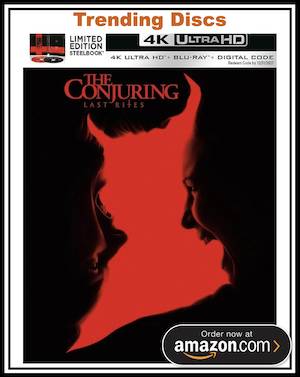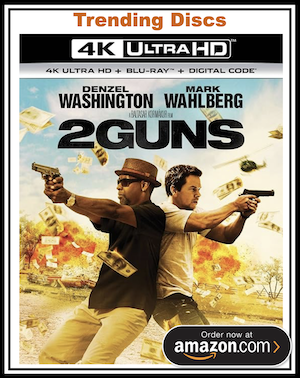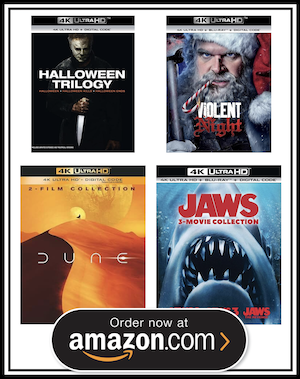Michael Scott
Partner / Reviewer
More
- Preamp, Processor or Receiver
- Yamaha TRS-7850 Atmos Receiver
- Other Amp
- Peavy IPR 3000 for subs
- Universal / Blu-ray / CD Player
- Panasonic UB820 4K UHD Player
- Front Speakers
- Cheap Thrills Mains
- Center Channel Speaker
- Cheap Thrills Center
- Surround Speakers
- Volt 10 Surrounds
- Surround Back Speakers
- Volt 10 Rear Surrounds
- Rear Height Speakers
- Volt 6 Overheads
- Subwoofers
- 2x Marty subs (full size with SI 18's)
- Video Display Device
- Sony 85 inch X950H FALD TV
Fist of the Condor

Movie:
Video:
Audio:
Extras:
Final Score:
AV NIRVANA is member and reader-supported. When you purchase an item using our links, we might earn an affiliate commission.
Movie:

Video:

Audio:

Extras:

Final Score:

AV NIRVANA is member and reader-supported. When you purchase an item using our links, we might earn an affiliate commission.
As a HUUUUUGE fan of martial arts movies from all over the world (I got into martial arts when I was 14 and have stuck with it in varying form for the last 30 years) I’m always intrigued by subgenres that I haven’t seen before. Usually we can sort of break down the major forms by nation (Kung-Fu from China, Silat from southeast Asia, Savate from France, Muay Thai from Thailand, Karate from Japan, etc..), but there are literally HUNDREDS of different martial arts styles from all over the world which have never (or very rarely) been seen on film, and it’s always a treat when a company imports a non traditional martial arts flick like Fist of the Condor. In this case, we get Marko Zaror, an incredible Chilean martial artist who has had some limited success in his own country as well as slowly becoming more popular in the United States (he squared off against Scott Adkins in Undisputed III and was an assassin in John Wick 4 recently) in what I would dub a “modern day 1970s Kung-Fu meets spaghetti Western” flick featuring two almost never before seen on screen styles of martial arts.
Fist of the Condor is going to be a bit polarizing for audiences. Those of you expecting a traditional chop sockey kung fu film from Chile are going to be slightly disappointed. The film is very much an homage to classic 1970s Kung-fu flicks, complete with a fractured time line, a master/apprentice relationship, and some over the top wire work to create something that is truly unique when blended with the Latin American locations and twangy “western” style score that director Ernesto Espinoza crafted.
As mentioned above, the story for Fist of the Condor is going to be a bit fractured and convoluted, and only feels like half a film at times (I’m GUESSING they’re going for a sequel?), but it is PURE homage at its finest. There are tons of old school Crash Zooms, Zaror’s character suffers from photophobia (so lots of flashing light into people’s eyes with mirrors), and there are a ton of minor references to classics like Crippled Avengers, Master of the Flying Guillotine etc. The tone comes out extremely campy and tongue in cheek, especially with some of the more over the top moves (being able to leap several body heights with just your hands, heavy wire work with the flips), but it’s all in good fun. I did notice that while there is a lot of classic references with the old wizened master and the young student having to extract vengeance, there was some “new” stuff added too. This mostly arises in the form of modern day “tricking” movies that are so highly stylized as to be non useful as any real martial arts move (think of full 720’s in the air with a kick that barely connects, flips, and other acrobatics similar to how Scott Adkins does in his films). As a result, it’s a weird hybrid of old and new.
I mentioned above that Fist of the Condor feels really like half a movie, and I stand by that. At 81 minutes long we really are only filled in with the back story of El Guerrero and his brother’s conflict. The story is told through flashbacks showing one brother training at the school, while the other one hides in the shadows mimicking what he can see, only for one of them to betray the school and murder his master. Most of the movie leaves you guessing WHICH one of the brothers in the flashbacks is the murderer, and which one is the “ronin” out on the road looking to gain revenge. The ronin brother slowly reveals just what happened, but we’re left with him riding off into the sunset after defeating his brother’s prize pupil, only for the credits to roll. It’s a weird feeling that we just FINALLY started to understand what was going on by the time the credits rolled, but it looks like Espinoza and Zaror (who actually were childhood friends) are looking at turning the story into a two parter. Sadly I couldn’t find any info online about whether they were GOING to do so, but the end result is a film that feels almost fractured and incomplete.
Now, the good thing is that this is a fantastic homage to 1970s classic Kung-fu, and it also showcases two martial arts styles that have never (or almost never) seen the light of day in cinema. The first is Rum Maki (an ancient Incan style) that Marko Zaror utilizes, and the second is Kalaripayattu (an ancient Indian martial arts style) whom his end of movie opponent utilizes. Both styles are highly unique, and while they have typical martial arts basics (every style is rooted in simple universal fighting techniques) they are so wildly different from what the western world views as typical martial arts that it’s a genuine delight to watch them on screen for the first time.
The film itself is what Espinoza describes as his most introspective work yet, dealing with themes of loss, betrayal, and revenge in a quiet and straight forward manner. Zaror plays both the shaved head ronin and his long haired brother who has stolen his birthright with quiet aplomb. The ronin being the most buddhist style, while his long haired counterpart as a bemused master above it all. Zaror can be a bit stilted at times, but he does a good job with the split characters besides the hilariously bad wig that he wears for his long haired brother. Part of me wanted a Zaror vs. Zaror fight ala The One with Jet Li, but still, it sort of makes sense not to have that final confrontation considering how well they were utilizing old 1970s Kung-fu themes.
Rating:
Not Rated by the MPAA
Video:

Audio:

Extras:

• Well Go USA Trailers
• Behind the Scenes
Final Score: 

I’m honestly torn on this one. On one hand, the film is partially broken and truncated. Plot lines are established and partially explained, but the film ends before everything can really be laid out in full in what I’m estimating is going to be completed in a sequel. The other side of my was in absolute aw at the loving homage to classic 1970s Kung fu and Spaghetti Westerns. There’s some tongue in cheek moments, but Espinoza and Zaror are VERY passionate about paying respect to what came before. As such, it plays out almost like a cheesy 1970s Shaw Brothers film of old, and that means broken plot lines, cheesy acting, and old school cinematography techniques that would be considered pedestrian in today’s world of martial arts action movies. So as I said, I’m torn. I can see how this is not going to appeal to some people, but I can also see how die hard kung-fu fans are going to absolutely LOVE some of the stuff in it. Personally I rolled my eyes a lot, but also was grinning from ear to ear as I’m one of the target audience for all of the homages. The Blu-ray itself looks and sounds good, so I’m going to give it a 4/5 simply because I can recognize all of the downsides the movie has, but love how well they were implemented even though I wanted to give it a 5/5.
Technical Specifications:
Starring: Marko Zaror, Eval Meyer, Fernanda Urrejola
Directed by: Ernesto Diaz Espinoza
Written by: Ernesto Diaz Espinoza
Aspect Ratio: 2.00:1 AVC
Audio: Spanish DTS-HD MA 5.1
Subtitles: English
Studio: Well Go USA
Rated: NR
Runtime: 81 minutes
Blu-Ray Release Date: May 23rd, 2023
Recommendation: Bound to be a Cult Classic














